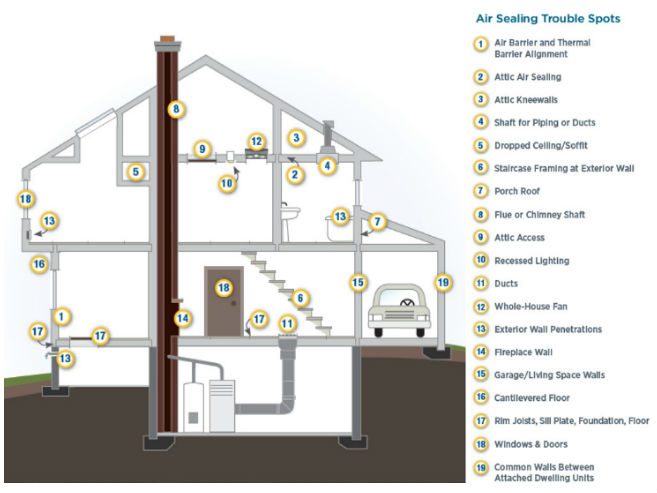How to Keep Warm Air from Creeping into Your Omaha Home

Your home is your haven from the hot, humid air in the summer. So, it’s important to protect it from the brutal elements outside at all costs. Keeping windows and doors shut isn’t enough sometimes. While there are a few tactics you can enforce to keep your home cooler this summer, to really feel a difference, you need to seal out the summer air at the source of the problem. Cracks and openings near doors and windows may not be noticeable with the naked eye, but they are surely there. Here’s how to seal them off and reap the benefits of a cooler home this season.
Seal the Source of the Problem
The first way to address the problem is to stop air leakage at the source. But you need to find those problem areas. There are a few areas that are known for their susceptibility to leak air into your home. Energy.gov reccommends that you visually and manually inspect these areas in your home for possible air leakage:
- All exterior corners
- Outdoor water faucets
- Areas where siding and chimneys meet
- Areas where the foundation and the bottom of exterior brick or siding meet
- Electrical outlets
- Switch plates
- Door and window frames
- Electrical and gas service entrances
- Baseboards
- Weather stripping around doors
- Fireplace dampers
- Attic hatches
- Wall or window-mounted air conditioners
- Cable TV and phone lines
- Areas where dryer vents pass through walls
- Vents and fans
Add Caulk or Weatherstripping
Once you’ve figured out where your problem areas are, you can start to fix the issue. We suggest using caulk and weatherstripping where it’s appropriate.
Caulk is a flexible material used to seal air leaks through cracks, gaps, or joints less than 1-quarter-inch wide between stationary building components and materials like door and window frames, cracks, etc. The best time to apply caulk is during dry weather when the outdoor temperature is above 45°F (7.2°C). It’s important to ensure low humidity during application to prevent cracks from swelling with moisture. Warm temperatures are also necessary to ensure that the caulk will set properly and adhere to the surfaces.
For moving components such as doors and operable windows, you should use weatherstripping. Weatherstripping is fairly easy to install. First, determine how much weatherstripping you will need. Add the perimeters of all windows and doors you want to seal, then add 5% to 10% to cover any waste. Also consider that weatherstripping comes in varying depths and widths for a more customized fit.
We want to ensure that you’re not wasting your money letting your air conditioner run to no avail this summer when all that cold air is being suppressed by hot air leaking into your home.
If you need help figuring out where your air leakage problem areas are, call the Omaha heating and cooling experts at Getzschman Heating & Cooling today at 402-554-1110 .
